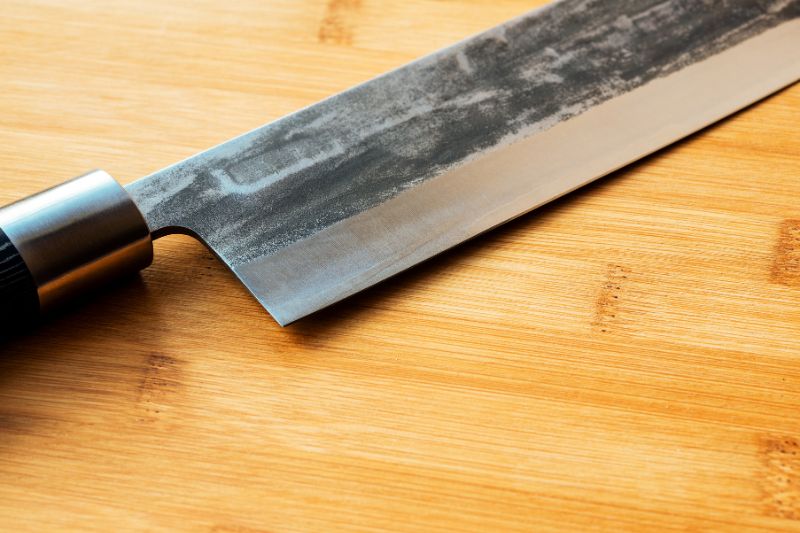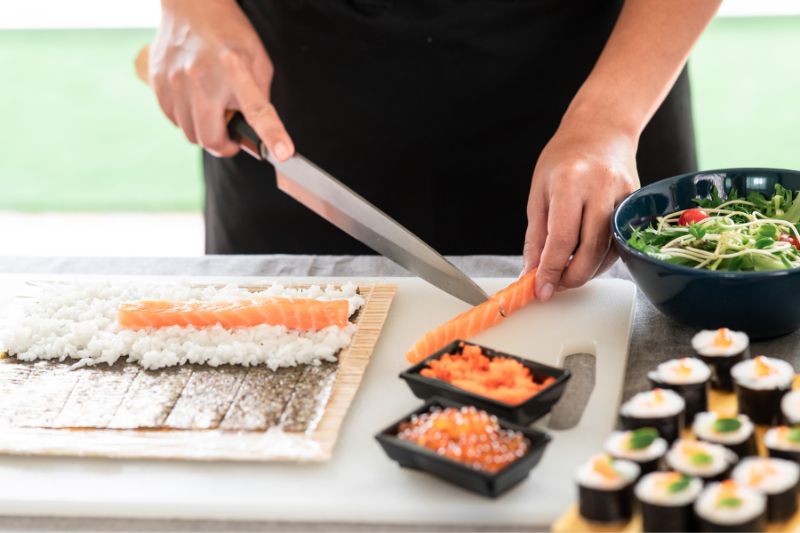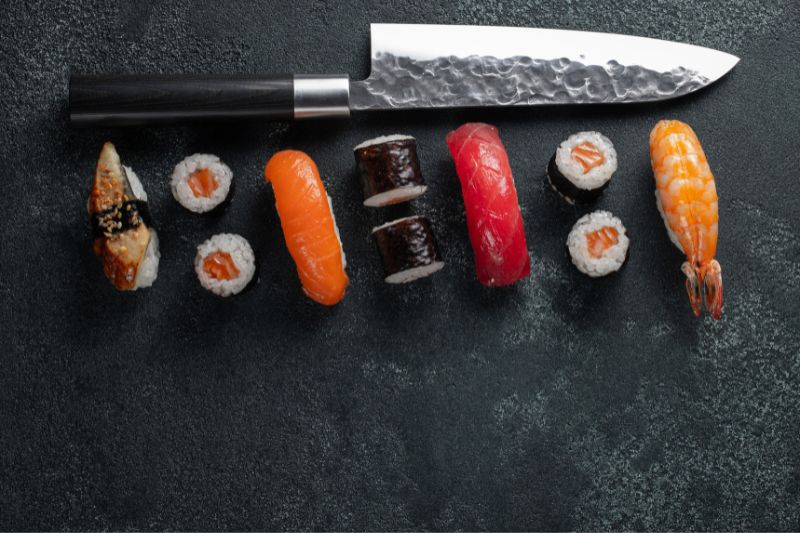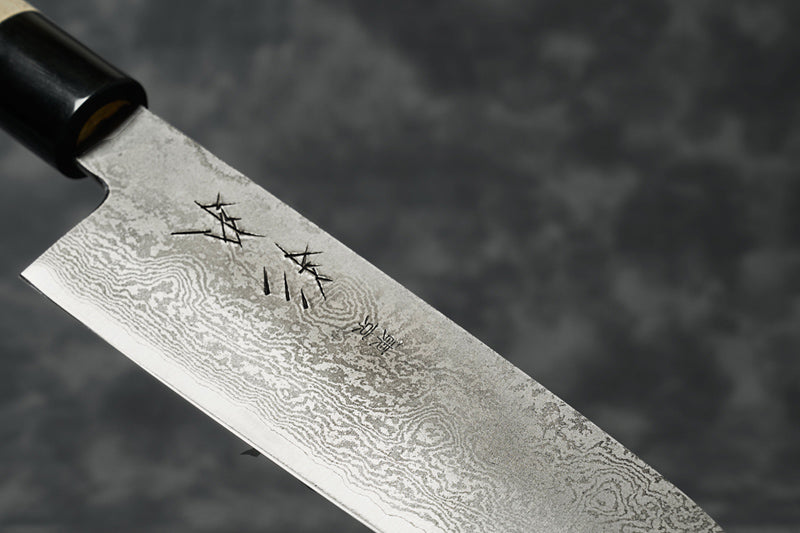It is nice to buy a Japanese knife, especially when in a bargain. Legitimate Japanese knife shops offer many promos or discounts, but when starting to buy a Japanese knife, spotting a fake Japanese knife can be challenging, as counterfeiters have become increasingly sophisticated in replicating the appearance of genuine products. However, several indicators can help you identify a potential fake. Here are some tips to spot an inauthentic, poorly-made or counterfeited Japanese knife:
1. Research the Brand
Familiarize yourself with reputable Japanese knife brands and their specific characteristics. Research the knife brand and understand its history, reputation, and product lines. Researching will help you recognize genuine products more efficiently.
2. Purchase from Authorized Sellers
Buy your Japanese knife from authorized retailers or trusted sources. Avoid purchasing from unknown or unverified sellers, particularly online marketplaces with dubious reputations. Authorized sellers are more likely to provide genuine products.
3. Price Discrepancies
Be cautious of unusually low prices for high-end Japanese knives. Authentic Japanese knives are typically crafted with precision and high-quality materials, making them relatively expensive. The knife may be a counterfeit if a deal appears too good to be true.
4. Blade Markings
Pay close attention to the markings on the blade. Genuine Japanese knives often have the brand name, logo, and sometimes the model number etched or engraved on the blade. Check the font, alignment, and quality of these markings. In some cases, counterfeit knives may have misspellings or poorly executed markings.
5. Weight and Balance
Authentic Japanese knives are known for their balance and lightweight design. Counterfeit knives may feel noticeably lighter or imbalanced due to using inferior materials. Hold the knife in your hand and evaluate its weight and balance.

6. Handle Quality
Japanese knives typically feature high-quality handles made from wood, resin, or other natural materials. Inspect the handle closely for signs of craftsmanship, such as smooth finishing, tight fittings, and attention to detail. Cheap or poorly constructed handles may indicate a fake.
7. Reputation and Reviews
Research customer reviews and feedback for the specific knife model or brand you're interested in. If there are consistent complaints about authenticity issues or poor quality, it's a red flag.
8. Seek Expert Advice
If you still need clarification on the authenticity of a Japanese knife, consult with experts or enthusiasts who have experience with these knives. They can provide their insights and help you make an informed decision.
Remember, while these tips help spot potential fakes, counterfeiters continuously improve their methods. So if you have doubts about a Japanese knife's authenticity, it's always best to consult experts or purchase from reputable sources to ensure you get a genuine product.
The authenticity of Japanese knives made outside Japan
While these knives may not be made in Japan, they can still be considered authentic in the sense that they adhere to traditional Japanese design principles, techniques, and characteristics.
Authenticity in the context of Japanese knives is more about the adherence to traditional Japanese craftsmanship and style rather than the specific geographical origin of production. Japanese-style knives made outside Japan can still possess the same blade shapes, profiles, materials, and cutting performance associated with traditional Japanese knives.
However, it's crucial to consider that quality and craftsmanship of Japanese-style knives made outside Japan can vary. The reputation and skill of the manufacturer, the materials used, and the way these knives were made are crucial factors in determining the authenticity and overall quality of the knife.
Some well-known countries that produce authentic Japanese-style knives
- Germany: Several German knife manufacturers have adopted the Japanese style and craftsmanship to create their own line of Japanese-inspired knives. These knives often feature high-quality materials, precision forging, and excellent craftsmanship.
- United States: There are American knife makers who specialize in Japanese-style knives and have gained recognition for their quality and authenticity. They incorporate traditional Japanese techniques and materials while producing knives in the United States.
- France: French knife makers have also embraced the Japanese style, particularly in their chef's knives. These knives often exhibit a blend of Japanese design principles with the renowned French culinary tradition.
- Other Countries: There are also skilled knife makers in countries like Sweden, Spain, and other regions worldwide who produce authentic Japanese-style knives.
When considering a Japanese-style knife made outside Japan, it's advisable to research the manufacturer, read customer reviews, and seek recommendations from trusted sources to ensure that the knife meets your expectations regarding authenticity, quality, and performance.
Get Free Bonus Books

Sign up for free to the Japanese Knife Club to get advice and exclusive articles about how to choose Japanese Knives, and tips and tricks for using Japanese knives.
About the author
Kei Nishida
Author, CEO Dream of Japan
Certification: PMP, BS in Computer Science
Education: Western Washington University
Kei Nishida is a passionate advocate of Japanese craftsmanship, a writer, and the founder and CEO of Japanese Knife Co., Japanese Green Tea Co., and Japanese Coffee Co., all part of Dream of Japan.
His journey began with a mission to introduce the world to the exquisite flavors of Japanese green tea. Through Japanese Green Tea Co., he pioneered the import of premium tea grown in nutrient-rich sugarcane soil, earning multiple Global Tea Champion awards. He then expanded into the world of coffee, launching Japanese Coffee Co., the first company to bring Sumiyaki charcoal-roasted coffee to a global audience.
With a deep appreciation for Japanese artistry and tradition, Kei turned his attention to one of Japan’s most revered crafts: bladesmithing. Through Japanese Knife Co., he made handcrafted katana-style knives, created by a renowned katana maker, available outside Japan for the first time. These exceptional knives embody centuries of samurai sword-making expertise, blending tradition with modern functionality for chefs and collectors alike.
Kei’s journey continues as he uncovers and shares Japan’s hidden treasures—one sip, one blade, and one legacy at a time.























